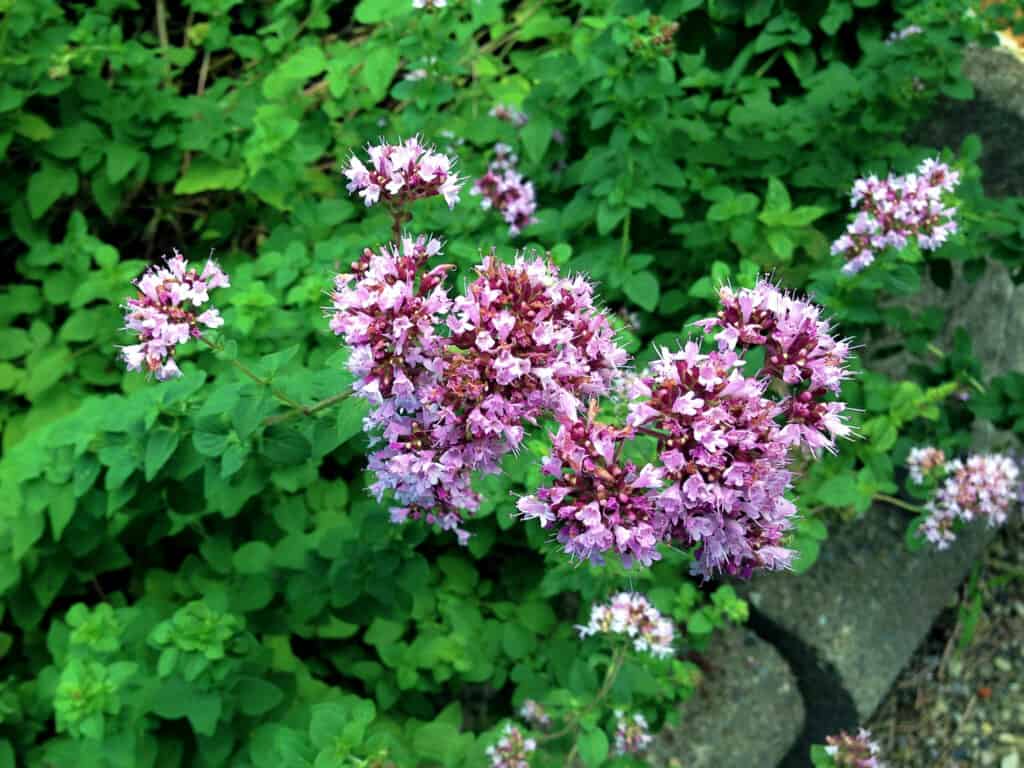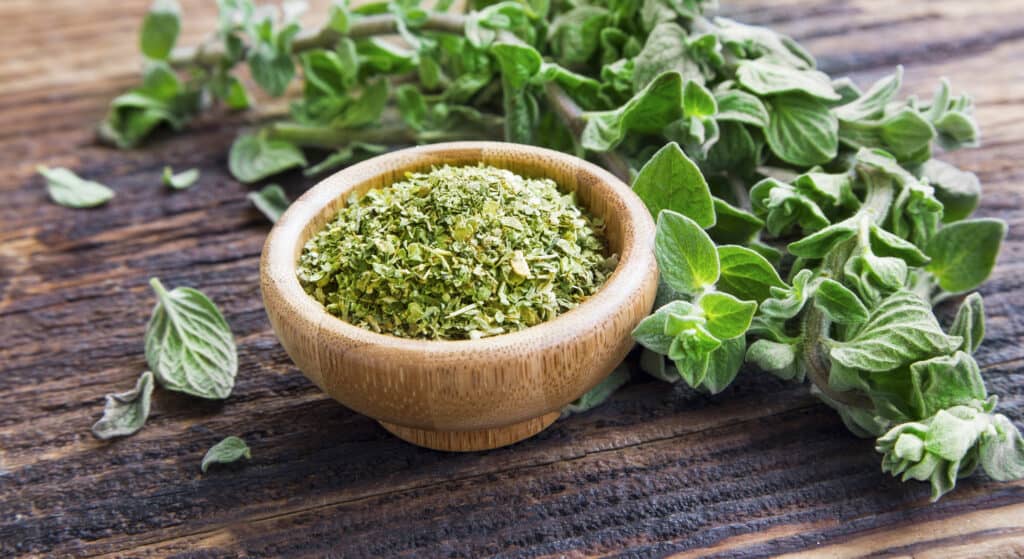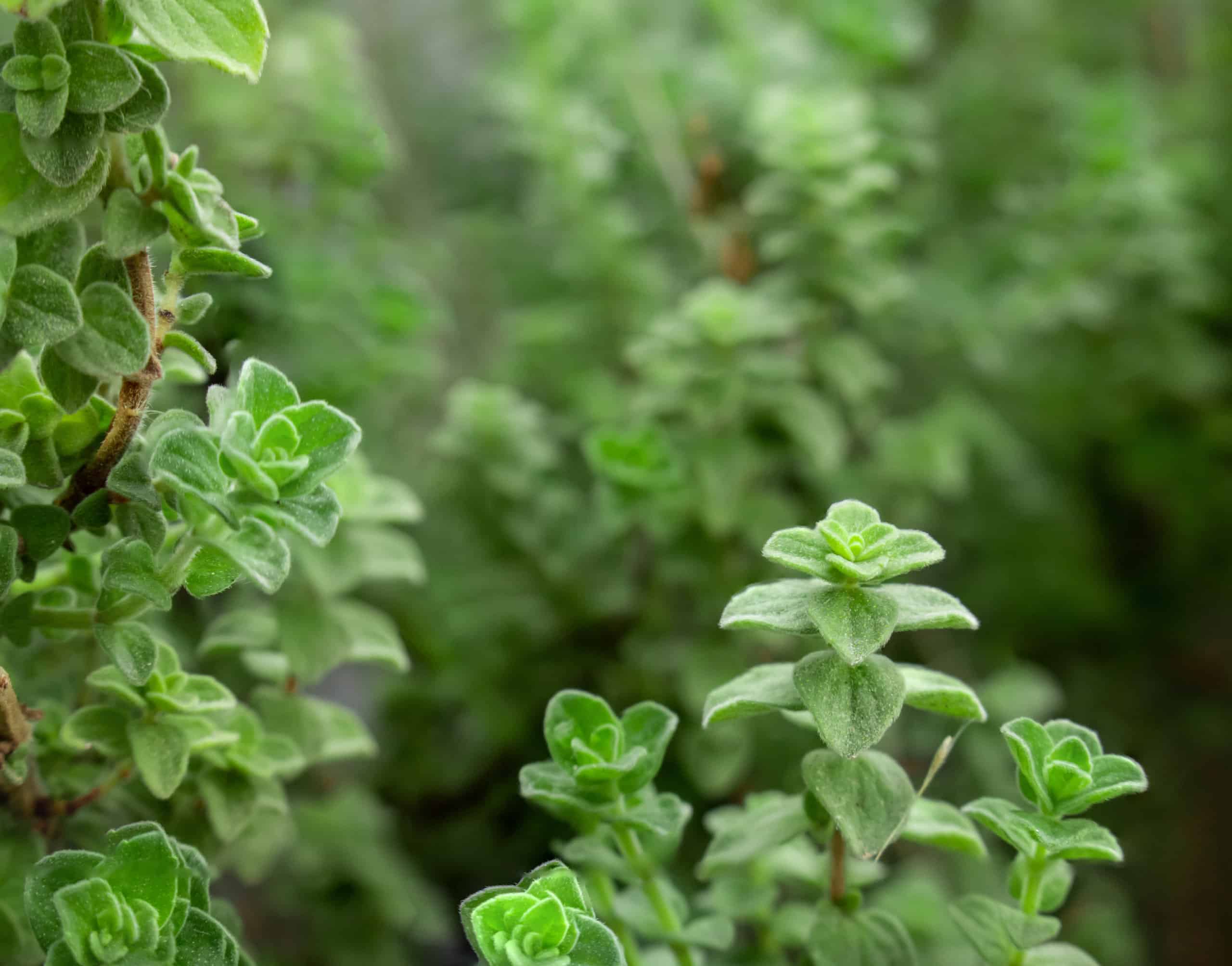Oregano is an aromatic herb that’s a staple in Italian cooking. It adds a punch of flavor to any dish and offers plenty of nutritional benefits. Fortunately for aspiring herb gardeners, it’s also easy to grow! In this article, we’ll explore how to grow oregano, including varieties to choose from and how to propagate for a continuous supply.
Let’s dig in!
Types of Oregano to Grow
Oregano, scientifically known as Origanum vulgare, is a member of the mint family. It hails from the Mediterranean region, where it’s commonly used for cooking in Greece, Italy, and Spain.
According to the North Carolina State University, there are 45 oregano species. The two most popular varieties for cooking include Greek oregano (Origanum vulgare subsp. hirtum) and Italian oregano (Origanum x majoricum).

grows in the wild in the Mediterranean region.
©Kei Tsuzurahara/Shutterstock.com
Is Wild Oregano the Same as Oregano?
Many oregano lovers are curious to know if wild oregano is the same as oregano grown in gardens and pots.
While the species may be the same, most food lovers claim that wild oregano has a stronger flavor and may boast a more robust nutrient profile. As oregano is easy to grow, you can always add a bit extra to your dishes for more kick.
How to Grow Oregano
While oregano will grow as an annual in most USDA zones, it’s a perennial in USDA zones 8-11. You can grow this hardy plant in pots and overwinter them inside for continuous growth or enjoy a fresh harvest in an outdoor herb garden each summer.
Here’s everything you need to know to grow oregano from seed.
1. Soil Preparation
Prepare well-draining soil by removing rocks and debris and mixing in plenty of organic content. Oregano will grow well in neutral to alkaline soil. If you’re planting outdoors, choose a plot with full sun exposure.
2. Planting Method
If you live in a colder climate, consider starting your seeds indoors 6-8 weeks before the final frost. Alternatively, you can plant seeds directly into the soil after the risk of late-season frost has passed.
Scatter the seeds with ample room, as mature oregano plants can reach as much as 18 inches across. You may need to thin out your seedlings as they grow. Gently cover the seeds with a quarter to a half inch of soil.
3. Watering
Oregano is a fairly drought-resistant plant. Give your oregano a thorough soak weekly if it doesn’t rain or the top inch of soil becomes dry. Otherwise, this plant is best left to its own devices.
Note that potted oregano will require more frequent watering than oregano planted in a garden. Ensure your pot has drainage holes at the bottom to prevent root rot.
4. Care and Maintenance
Trim your oregano back when the sprouts reach 4-6 inches tall. This proactive pruning will encourage fuller growth and a better harvest.
Aphids and spider mites are common pests for oregano plants. Spray the oregano with water and dish soap to remove them.
5. Harvesting
Trim away leaves as you need them throughout the growing season using clean, sharp shears. Try to harvest all the leaves before the plant flowers for the best burst of flavor.
6. Overwintering
You can overwinter your oregano by deadheading the leaves and covering the plant with mulch in warmer USDA zones. Alternatively, you can deadhead and transfer your plants to indoor pots for the winter in cooler zones.

Oregano is low-maintenance and easy to grow in pots or a garden.
©Volosina/Shutterstock.com
How to Propagate Oregano
Like most herbs, you can propagate oregano for continuous growth. Trim the stem of a healthy oregano plant 4-6 inches from the top. Place the cut end into a cup of water, changing the water every few days until the oregano starts to root.
Alternatively, you can place the cut end of the oregano directly into the soil. Dip the end in rooting hormone or honey to promote quicker root growth.
How to Dry Oregano
If you have a bountiful oregano harvest, you can preserve your herbs by drying them.
The easiest way to dry oregano is the hang drying method:
- Cut your oregano plants at the stem using sharp, clean shears.
- Bundle your cut plants together at the stem with a string or an elastic band.
- Hang the oregano bundles upside down in a warm, dry area for 6-8 weeks.
- Take down the oregano and store the leaves in an airtight container or mason jar.
You can also expedite the process by using a food dehydrator or drying the bunches in the oven at a low temperature.

The hanging method is an easy way to dry oregano and preserve your harvest.
©catalina.m/Shutterstock.com
Is Oregano Safe for Pets?
There’s conflicting information online about whether oregano is safe for pets. The ASPCA lists oregano as mildly toxic for animals, causing gastrointestinal upset. Several vets note that it won’t cause harm in small doses.
The general consensus is to avoid using oregano oil, as it’s quite potent and could harm your animals. However, there’s no need to panic if a curious cat or dog takes a nibble of your oregano plant. When in doubt, always consult your veterinarian.
Thank you for reading! Have some feedback for us? Contact the AZ Animals editorial team.








